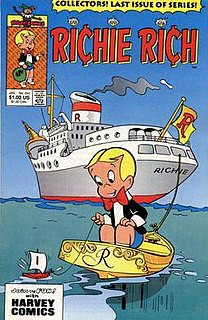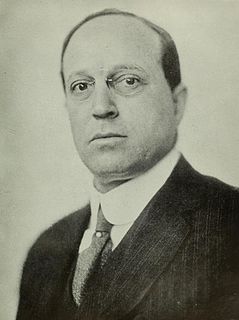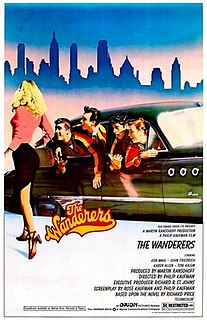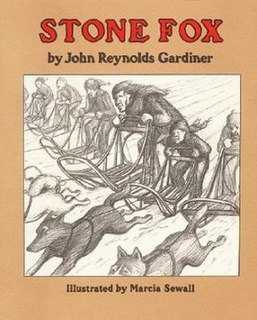
Happy Days is an American television sitcom that aired first-run on the ABC network from January 15, 1974, to July 19, 1984, with a total of 255 half-hour episodes spanning 11 seasons. Created by Garry Marshall, it was one of the most successful series of the 1970s. The series presented an idealized vision of life in the 1950s and early 1960s Midwestern United States, and it starred Ron Howard as Richie Cunningham, Henry Winkler as his friend Fonzie, and Tom Bosley and Marion Ross as Richie's parents, Howard and Marion Cunningham. Although it opened to mixed reviews from critics, Happy Days became successful and popular over time.

William Dean Howells was an American realist novelist, literary critic, and playwright, nicknamed "The Dean of American Letters". He was particularly known for his tenure as editor of The Atlantic Monthly, as well as for his own prolific writings, including the Christmas story "Christmas Every Day" and the novels The Rise of Silas Lapham and A Traveler from Altruria.

Richard "Richie" $ Rich Jr. is a fictional character in the Harvey Comics universe. He debuted in Little Dot #1, cover-dated September 1953, and was created by Alfred Harvey and Warren Kremer. Dubbed "the poor little rich boy", Richie is the only child of fantastically wealthy parents and is the world's richest kid. He is so rich, his middle name is a dollar sign, $.

Roger Tory Peterson was an American naturalist, ornithologist, illustrator and educator, and one of the founding inspirations for the 20th-century environmental movement.
This list contains only complete, printed English-language editions of The Hobbit by J. R. R. Tolkien. It is not for derived or unprinted works such as screenplays, graphic novels, or audio books.

Ballantine Books is a major book publisher located in the United States, founded in 1952 by Ian Ballantine with his wife, Betty Ballantine. It was acquired by Random House in 1973, which in turn was acquired by Bertelsmann in 1998 and remains part of that company today. Ballantine's original logo was a pair of mirrored letter Bs back to back, while its current logo is two Bs stacked to form an elaborate gate. The firm's early editors were Stanley Kauffmann and Bernard Shir-Cliff.

Eugene Isaac Meyer was an American financier and newspaper publisher. Through his public career, he served as the 5th chairman of the Federal Reserve from 1930 to 1933 and was the first president of the World Bank Group from June to December 1946. Meyer published The Washington Post from 1933 to 1946, and the paper stayed in his family throughout the rest of the 20th century.

Richard Reinhardt is an American drummer best known by his stage name Richie Ramone, and for being the drummer for the punk band the Ramones from February 1983 until August 1987. As of 2022, he is one of the four surviving members of the band.
The Winter Hill Gang is a loose confederation of organized crime figures in the Boston, Massachusetts, area. The gang members and leadership are predominantly Irish-American, and it is often referred to as an Irish Mob organization, although many prominent and influential Winter Hill Gang members are also of Italian descent.

The Wanderers is a 1979 American film co-written and directed by Philip Kaufman and starring Ken Wahl, John Friedrich, Karen Allen, Toni Kalem, Tony Ganios and Jim Youngs. Set in the Bronx in 1963, the film follows a gang of Italian-American teenagers known as the Wanderers and their ongoing power struggles with rival gangs such as the Baldies and the Wongs.

Richard J. Cunningham is a fictional character played by Ron Howard in the 1970s TV sitcom Happy Days. He is the second son of Howard and Marion Cunningham, brother of Joanie Cunningham and Chuck Cunningham, and a friend of Fonzie, Ralph Malph, and Potsie Weber. Richie was the original lead character, but was supplanted by Fonzie when that character's popularity came to dwarf that of Richie and the other characters.
Merlo John Pusey was an American biographer and editorial writer. He won the 1952 Pulitzer Prize for Biography or Autobiography and the 1952 Bancroft Prize for his 1951 biography of U.S. Chief Justice Charles Evans Hughes.

Stone Fox is a children's novella by John Reynolds Gardiner. It is the first and best known of Gardiner's books. Stone Fox was acclaimed and very popular when it was published in 1980. It sold three million copies and was turned into a television movie starring Buddy Ebsen, Joey Cramer, and Gordon Tootoosis and directed by Harvey Hart in 1987. It was named a New York Times Notable Book of the Year for 1980, and was included in 100 Best Books for Children by Anita Silvey.

The Substitute 2: School's Out is a 1998 straight-to-DVD action-crime-thriller film directed by Steven Pearl and starring Treat Williams as Carl Thomasson, a mercenary who masquerades as a teacher in order to enter a tough urban school and wreak his revenge upon his brother's killer.

A Drink Before the War is a crime novel by American writer Dennis Lehane, published in 1994. It was his debut novel. It is the first book in a series focusing on private investigators Patrick Kenzie and Angela Gennaro.

Borsalino is a 1970 French gangster film directed by Jacques Deray and starring Alain Delon, Jean-Paul Belmondo and Catherine Rouvel. It was entered into the 20th Berlin International Film Festival. In 2009, Empire named it No. 19 in a poll of "The 20 Greatest Gangster Movies You've Never Seen… Probably". A sequel, Borsalino & Co., was released in 1974 with Alain Delon in the leading role. The film is based on real-life gangsters Paul Carbone and François Spirito, who collaborated with Nazi Germany during the occupation of France in World War II.

Borsalino & Co. is a 1974 French crime film directed by Jacques Deray and starring Alain Delon, Riccardo Cucciolla and Daniel Ivernel. It is the sequel to the 1970 film Borsalino, opening with the criminal Siffredi as he searches Marseille for the gang that murdered his friend Capella.















